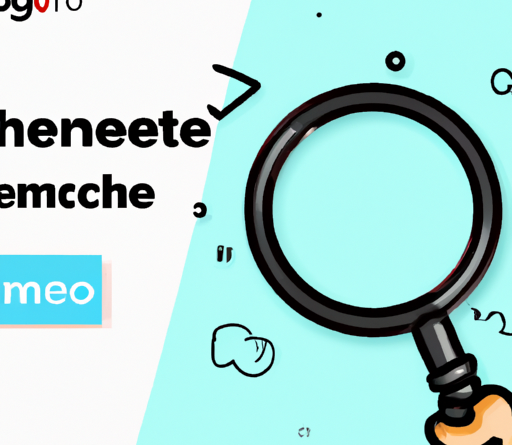
So, you’ve got a business website up and running, but you want to take it to the next level and maximize its performance on search engines. Well, look no further. In this article, we’ll explore the world of technical SEO and how it can help optimize your business website. Whether it’s improving website speed, fixing broken links, or ensuring proper indexing, technical SEO is the secret sauce that can propel your website to new heights. Let’s dive in and uncover the essentials of optimizing business websites with technical SEO.
Understanding Technical SEO
Technical SEO plays a crucial role in ensuring that your business website is optimized for search engines. It focuses on the backend aspects of your website, such as its crawlability, indexability, speed, mobile-friendliness, URL structure, structured data markup, site navigation, website security, and meta tags. By implementing technical SEO strategies, you can improve your website’s visibility in search engine results and attract more organic traffic.
Crawlability and Indexability
Crawlability and indexability are fundamental aspects of technical SEO that determine how search engines discover and understand your website. Optimizing your Robots.txt file allows you to control which parts of your website search engine crawlers can access and index. Creating XML sitemaps provides search engines with a roadmap of your website’s content, helping them crawl and index your pages more efficiently. Fixing crawl errors ensures that search engines can access and index your website without any obstacles. Managing duplicate content helps prevent search engines from being confused by multiple versions of the same content.
Website Speed and Performance
Website speed and performance directly impact user experience and search engine rankings. Implementing page speed optimization techniques, such as caching and minification, can significantly improve your website’s loading time. Reducing server response time involves optimizing your server configuration and infrastructure to ensure swift responses to user requests. Compressing images reduces their file size without compromising quality, resulting in faster page loading. Leveraging browser caching enables returning visitors to load your website more quickly by storing certain resources on their local device.
Mobile Friendliness
With the increasing use of mobile devices, it is essential to make your website mobile-friendly. Responsive web design ensures that your website adapts to different screen sizes and maintains optimal functionality across all devices. Mobile-first indexing means that search engines primarily consider the mobile version of your website for indexing and ranking purposes. To optimize for mobile speed, you need to minimize page size, reduce the number of HTTP requests, and optimize media files. Additionally, avoiding Flash and pop-ups on mobile devices enhances the user experience and helps improve rankings.
URL Structure and Canonicalization
Creating SEO-friendly URLs is crucial for both search engines and users. A well-structured URL that includes relevant keywords helps search engines understand the content of your web page and can improve its visibility in search results. Using canonical tags is essential when you have multiple versions of the same content, as they indicate the preferred version to search engines, avoiding duplicate content issues. Avoiding URL parameters that create dynamic URLs can make it easier for search engines to crawl and index your website. Implementing 301 redirects allows you to redirect outdated URLs to new ones and maintain rankings and traffic.
Structured Data Markup
Structured data markup, such as Schema Markup, provides additional information to search engines about the content on your website. Implementing rich snippets, which are visual enhancements to search results, can help highlight key information about your business, such as star ratings, reviews, and event details. By improving search visibility through structured data markup, you can attract more clicks and potentially higher rankings in search results.
Optimizing Site Navigation
Effective site navigation is essential for user experience and SEO. Improving internal linking ensures that your web pages are interconnected, allowing search engines to discover and index your content more easily. Creating HTML and XML sitemaps helps search engines navigate your website’s structure and find all your important pages. Optimizing navigation structure involves organizing your website’s menus, categories, and subcategories in a logical and user-friendly manner, making it easier for both visitors and search engines to navigate your site.
HTTPS and Website Security
Website security is becoming increasingly important in today’s digital landscape. Implementing SSL/TLS certificates enables the secure transfer of data between your website and users, protecting sensitive information such as passwords and credit card details. Securing your site with HTTPS also provides a trust signal to both users and search engines, potentially improving search rankings. Preventing malware and hacking involves regularly updating your website’s software, using strong passwords, and taking proactive measures to identify and resolve security vulnerabilities.
Meta Tags and Meta Descriptions
Meta tags and meta descriptions are HTML elements that provide information about your web pages to search engines and users. Writing optimized meta titles that include relevant keywords can improve your website’s visibility in search results and attract more clicks. Creating compelling meta descriptions that accurately describe your content and entice users to click can improve click-through rates and drive more traffic to your website. Including relevant keywords in meta tags helps search engines understand the context of your web pages and rank them appropriately.
Image Optimization
Optimizing images on your website can improve both user experience and search engine rankings. Optimizing image alt text involves providing descriptive and relevant alternative text for visually impaired users and search engine crawlers. Reducing image file size through compression techniques ensures that your web pages load quickly without compromising image quality. Using descriptive filenames that include keywords helps search engines understand the content of your images and can improve their visibility in image search results.
By implementing technical SEO strategies, you can optimize your business website for search engines, improve its visibility in search results, and attract more organic traffic. From improving crawlability and indexability to optimizing site speed, mobile-friendliness, URL structure, structured data markup, site navigation, website security, meta tags, and image optimization, each aspect of technical SEO plays a vital role in creating a strong and optimized online presence for your business. So take the necessary steps to understand and implement technical SEO best practices, and watch your website climb the ranks in search engine results.







